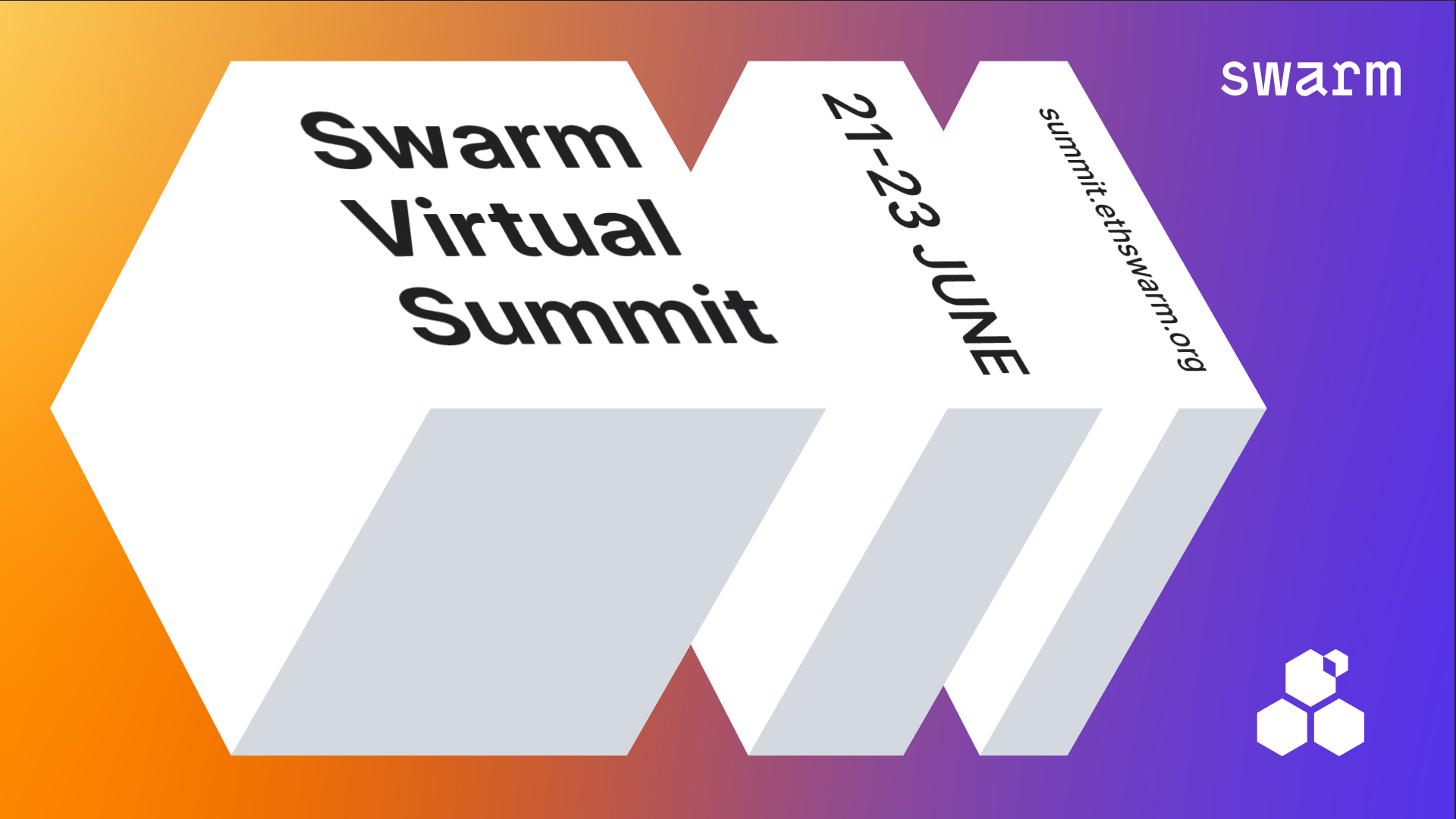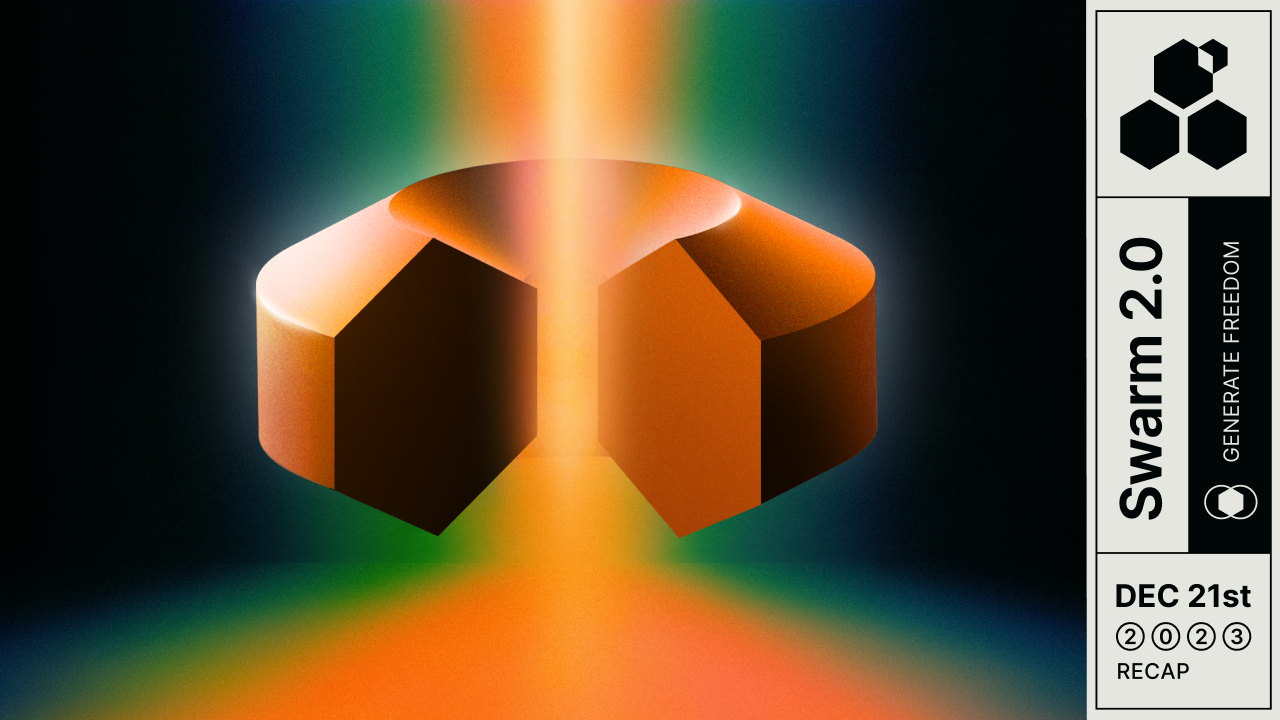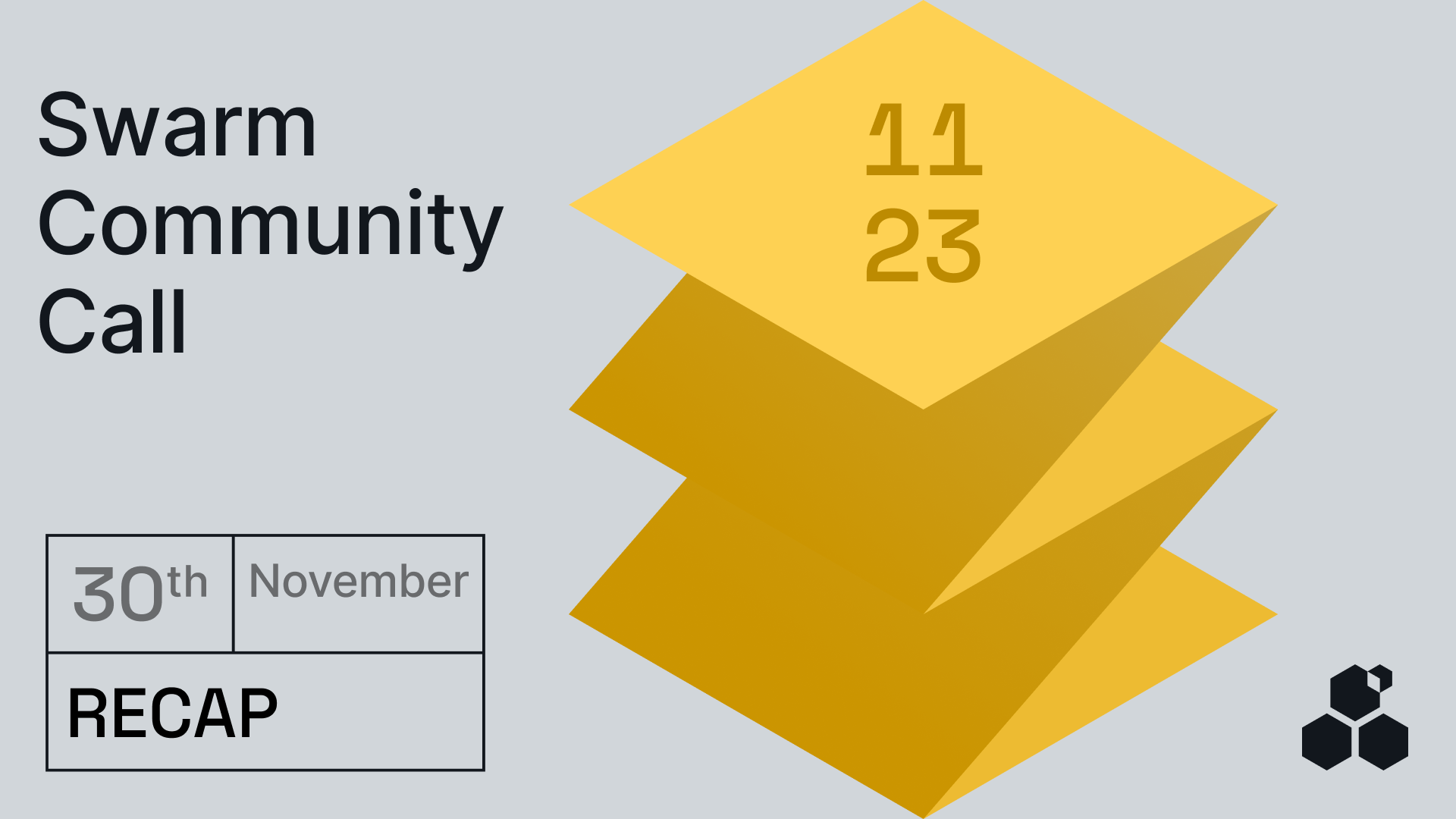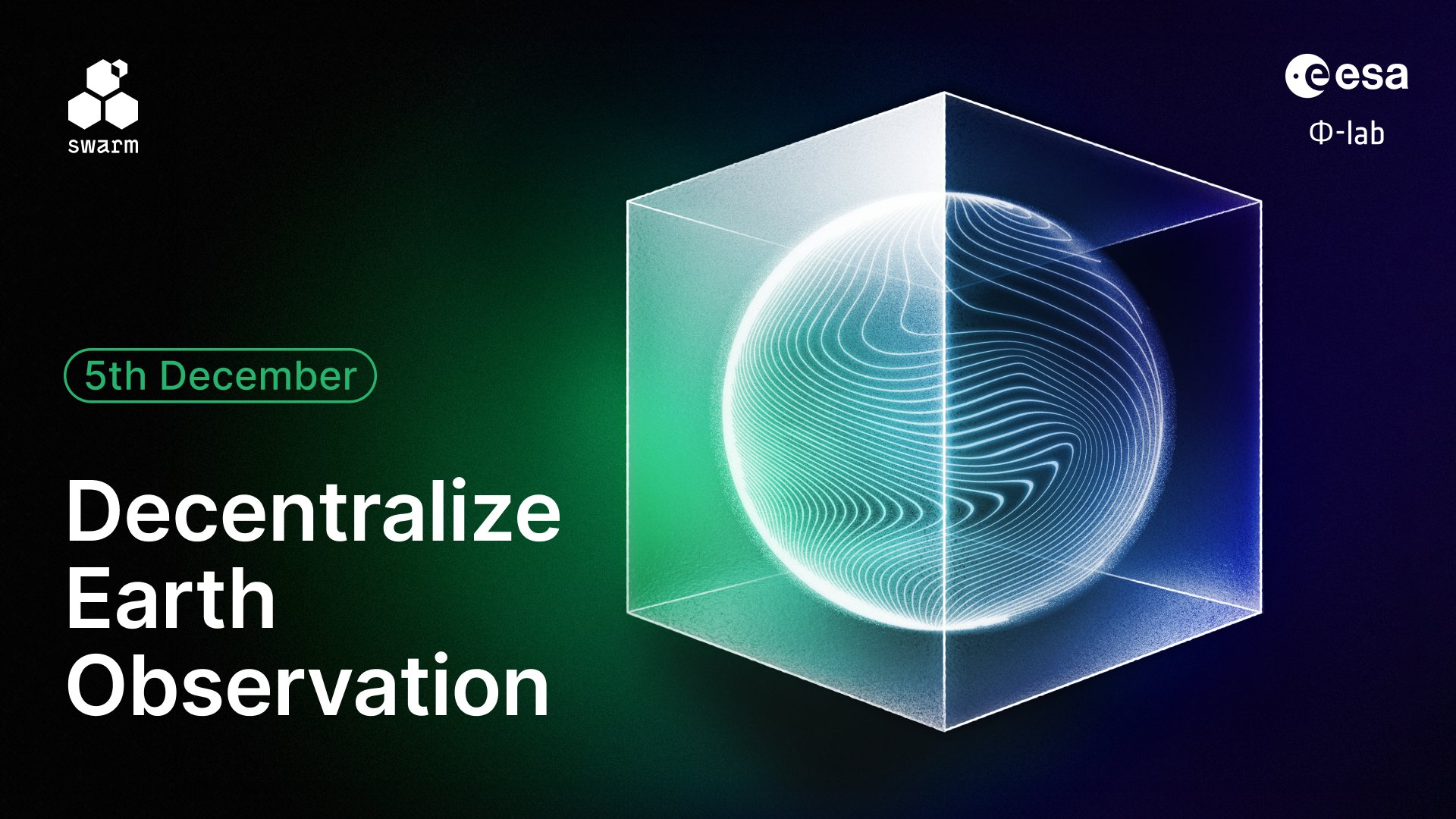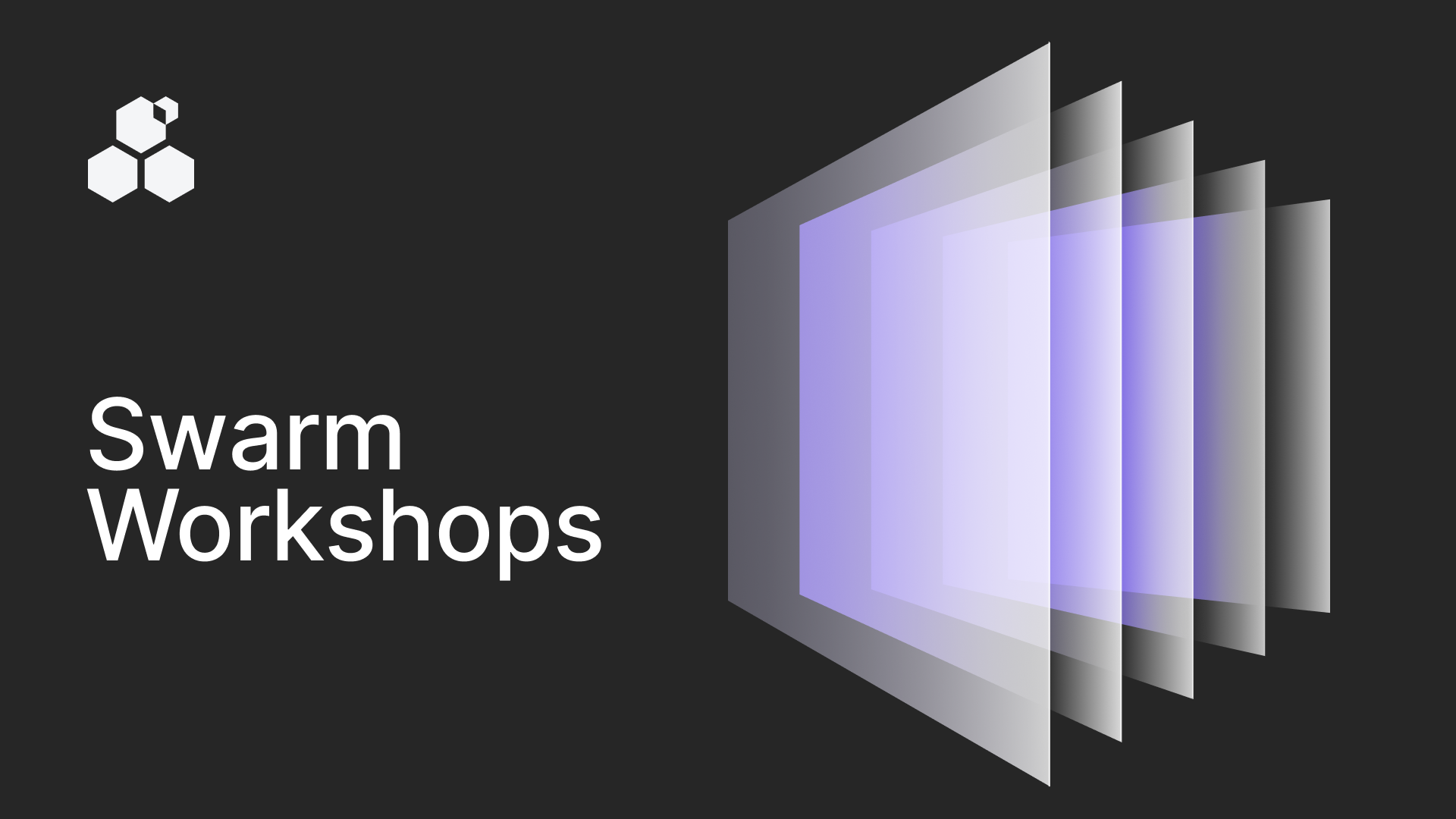Day 1*
As the summer light symbolically vanquished the darkness on 21 June, Swarm network kicked off its three-day Swarm Virtual Summit. This year, the network’s global community gathered in the virtual world, giving all its diverse members a chance to watch and listen to leading voices and keen enthusiasts across different fields on the online stage.
They shared their insights, fresh ideas, and experience relating to Swarm and Web3, creating an engaging event for everyone in the audience. Below is a recap of the first day, which includes the latest network updates, new partnerships and use cases for the network.
Swarm is ready to g(r)o(w)
The entire Swarm Virtual Summit is available here
The summit opened with the latest news in the Swarm network. In the last six months, Swarm has made impressive progress regarding the upgrade and optimisation of its basic infrastructure, along with recalibrated storage prices making running a node profitable, i.e. making the network economically sustainable:
- Enhanced syncing, multi-stamps per chunk, pinning
- Phases 3 and 4 finalisation, plus inclusion proofs
- Reduced freezing in redistribution game
- Reliable network, 0% error rate for data retrieval
“We have been through every stress test; we’ve already scaled up thousands of nodes in the network; we’ve had doublings; we’ve had everything and that 0% has been maintained,” Callum Toner from the Research Track stressed. And with better syncing, multiple stamps per chunk, pinning of files and more, Swarm provides a stable foundation for a plethora of future use cases, Callum added.
The new edition of the Book of Swarm is out
All that Swarm encompasses is also brought together in the revised and recently fully updated edition of the Book of Swarm, including the upgraded storage incentives mechanism. It details all the inner workings of the network, so if you have any technical questions, the Book of Swarm is the best source to go to.
Help make Swarm even better with SWIPs
Everyone interested in making the Swarm network even better and richer with features is invited to submit a formal proposal in the form of Swarm Improvement Proposals (SWIPs). Every sensible suggestion will be taken up by the research and development teams and put into action.
Impending roll out of the local store and decentralised price oracle
Regarding the near future, Callum pointed out the mainnet roll out of the updated localstore, which will be a breaking release, happening this week. The next big thing coming to Swarm in about five weeks is the decentralised price oracle (Phase 3), which will mark the completion of the core components of the storage incentives mechanism, along with the completion of Phase 4.
New partnerships
During the first day of the summit the Swarm Foundation also announced four new partnerships:
- DAppNode – A plug-n-play node provider for different blockchain networks.
- MiPasa – provides verified data for informed decision making. In his brief demo, Jonathan Levi showcased the browser-based app and its effortless integration with Swarm. It will allow researchers and analysts to pull verified models and data directly from Swarm, process and enrich it, and store them back to Swarm, all from their browsers.
- Kiwix – stores and provides internet content for people without internet access. Stephane Coillet-Matillon pointed out the problem of trust that AI will introduce and the need for establishing and verifying trust. In this kind of environment it is also important to have projects like Wikipedia on Swarm that people can trust and reference.
- CleanApp – a global coordination game for waste and hazard mapping. According to Boris Mamlyuk, blockchain is important in this effort because polluters work very hard to keep waste hotspots out of people’s perception and blockchain makes them permanent. CleanApp’s integration with Swarm will help put pollution evidence on a public storage solution where it will be free from tampering and censorship attempts.
Talks
Bringing Nextcloud to Swarm
In his talk, Björn Magalhães from MetaProvide discussed the possibilities of how 400,000 of already existing Nextcloud-servers could be used with Swarm for decentralised data-storage, blockchain interaction, and Bee node hosting. The demo focused on how you can connect your self-hosted Nextcloud instance to Swarm and leverage the potential of a decentralised storage network. Also, Nextcloud wallet-login is currently in the works that in the future could take advantage of Swarm’s native token, BZZ.
Creating digital hives - a Web3 builder’s toolkit
How create decentralised systems that are value-driven and where positive uses of the system are incentivised? Michal Matlon dissects the nine-part toolkit called The Hivemaker’s Code which is based on the three principles of how living organisms organise themselves: self-organisation (the system creates its own purpose), decentralisation (no subsystem can control other subsystems) and emergent creativity (the system must constantly adapt and create new solutions).
Enabling parallel societal structures through decentralised technologies
Joseph Jelacic takes the audience through the genesis of Paralelni Polis, one of Europe’s most prominent cryptoanarchic establishments, its philosophical foundations laid by Vaclav Benda and how they are involved in today’s crypto scene in Europe.
Bringing good data to Swarm
The last talk of the day was reserved for Črt Ahlin who presented the Great Data Upload initiative that aims to bring the world’s data to Swarm. Starting with public data, the goal is to preserve popular data, data that is costly to host and data that should be stored in a decentralised manner. Črt presented the tools that can be used to upload the data, the file format used, how to download the data and download limitations.
Day 2
On the second day of the Swarm Virtual Summit the talks meandered between real-world examples of how Web3 can improve our world, the exploration of novel concepts like digital integrity and how this technology can be used to fight censorship.
Talks
Swarm - a value-aligned storage layer for the world computer
The first talk of the day was held by Swarm Team Lead, Viktor Trón. In it, he focused on what makes Swarm unique as the data layer for the world computer.
When designing such a layer, architectural decisions are key because they determine how easily it is engineered to the needs of the end user. Broadly, there are three major groups by which such a layer can be evaluated:
- Data representation (how is data transformed into smaller units and how these form higher level structures relevant to the user)
- Persistence guarantees (how long and how certain we are that we can access data)
- Privacy requirements on access (who can access the data and who knows who can access the data)
As Viktor explained, there are commonalities between different contenders that offer decentralised storage, such as slicing data into smaller units, routing and forwarding chunks of data, using different incentives for bandwidth and storage etc. The differences lie in where the data is stored and how routing is implemented.
Strong incentives are key to make the network work in a hands-off mode
Swarm uses a proximity-based storage model, which is supported by a robust incentivisation mechanism that keeps the nodes aligned with the network’s needs. The (positive) incentives are fundamental to this model in which the nodes are seen as profit-maximising agents for whom optimal economic interests coincide with the needs of the network.
Anonymity and practicability
The architectural choices implemented in Swarm also allow behaviours such as “upload and disappear” for devices with limited storage, meaning they can stream data directly into the network. At the same time, relationships between data chunks are concealed, providing anonymity for the owner of the data.
Data is always available and easily reconstructed
The built-in redundancy of the network promotes data availability and flexible data reconstruction and also offers the user the option to configure their levels of risk and security when it comes to errors or even a potential network split.
A wide spectrum of communication options
In addition, there are two serverless communication innovations (feeds and node-addressed messages) in Swarm, which, when used together, are very powerful and enable a whole spectrum of communication, from group chats to encrypted, zero-leak communication systems.
All of this taken together makes Swarm a layer that enables high-level features as well as secure messaging implementations, Viktor concluded.
Byzantine-tolerant error correction - a use case for Swarm
Erasure coding is nothing new in providing data redundancy in distributed storage systems. The problem with Byzantine fault-tolerant erasure coding lies in some false assumptions when designing the system. Independent Web3 geek Silur talks about these fallacies and gives his insights how a network like Swarm could build an adversarial-resistant erasure coding system.
Are we entitled to digital integrity?
In the current extractive data economy there’s a search for a core human right relating to the digital world. Alexis Roussel from Nym discusses the concept of digital integrity through the lens of the recent Swiss referendum that enshrined it in the constitution. His talk focuses on how digital integrity extends the concept of physical and mental integrity, its relevance for digital self-determination and how it changes and refocuses the privacy narrative.
Decentralising musical rights organisations
Today, copyright management organisations (CMO) are centralised, country-based entities that physically store musical scores and audio supports. Matteo Alessio Tambussi discusses his proof-of-concept to create a decentralised registry and payout system based on usage type running on Swarm.
Gaming on the blockchain - is it delivering the promises?
Mark Engelhardt from AMG DAO talks about the big promises blockchain gaming introduced into the gaming industry. From full ownership, open economies, interoperable games to trustlessness. But is it delivering?
Fixing the food chain
Over 100 million tonnes of perfectly edible food are discarded every year. Balint Drahota demonstrates how the two companies he’s involved in, Essence Food and Fair Food Data, upcycle the available food and help make the logistics chain involved in food distribution much more traceable and transparent.
The importance of resisting censorship: how activists can use blockchain as a tool
A panel discussion with Nadya Tolokonnikova (PussyRiot), Mike Bonnano (The Yes Man) and Scott Beibin (Mordechai Tuchasman) moderated by Lou de Kerhuelvez.
Day 3
The summit’s last day was a vivid and interesting mix of topics that spanned across AI in blockchain, big brain data NFTs and importance of UX in decentralisation.
Talks
Hey, AI, write my smart contract
Sasha Pitkevich gives an unapologetic talk about what AI today can do for a blockchain delivery team. No magic, no false promises, real facts and examples. Hint: AI is a big help, but it needs a friendly human to help it as well.
The challenges of keeping big brain data secure
Are we entering big brain data and does this pose a new security risk? Jurij Dreo from BrainTrip discusses the issue in his talk by looking at how the advent of neuro imaging and data processing technologies, coupled with a dramatic increase in available neuro data, has also increased the potential of its misuse in the future.
From normies to degens - a Solarpunk tale
Barbara R. Lőrincz from solarpunk.buzz talks about the guidelines and contemplations that underpin the Solarpunk movement.
Minting NFTs from your WordPress archive with Kredeum
Alain Papazoglou and Philippe Pérou from Kredeum demonstrate how WordPress users can plug their WordPress archive to the Swarm network and easily mint and sell NFTs in a personally curated marketplace.
Making NFTs unstoppable on Swarm
NFTs and their metadata are usually at risk of being lost when stored on centralised solutions. Alexander Shedogubov from Envelope DAO shares their solution on how to create a semi-public service of pinning NFTs to Swarm by creating a mechanism that will allow NFT owners to easily request node operators to pin their files to Swarm for them.
Exploring Ethereum transactions with Blobscan
When Ethereum introduced the EIP-4844 it changed the transaction format which allows for a much bigger block data field, called a blob. In his talk, Gabi demonstrated Blobscan, the first blob explorer of its kind and one that uses Swarm to store blob data.
Etherna: redefining video sharing with decentralisation, transparency, and uncensorable contents
Sergio Marchese demonstrates Etherna, a decentralised, zero-data and censorship resistant video platform. Etherna is centred around empowering community content creation and curation based on fair incentives for content producers and users.
From S3 to Swarm - less friction more decentralised storage
To encourage more people to adopt decentralised storage, we need to eliminate key friction points from the onboarding and migration process. Sam Lauridsen from Protobox unveils their S3 API gateway for Swarm that removes a lot of friction from adding Swarm’s decentralised storage to your toolbox.
Increasing decentralisation capability through UX
Achieving decentralisation is not easy. But we can dramatically increase the ability to decentralise a system with great UX. Pol Lanski from DappNode explains how and why UX is crucial in this role.
*All talks are not yet available in the archive. The blogpost will be updated once they are.
Discussions about Swarm can be found on Reddit.
All tech support and other channels have moved to Discord!
Please feel free to reach out via info@ethswarm.org
Join the newsletter! .
